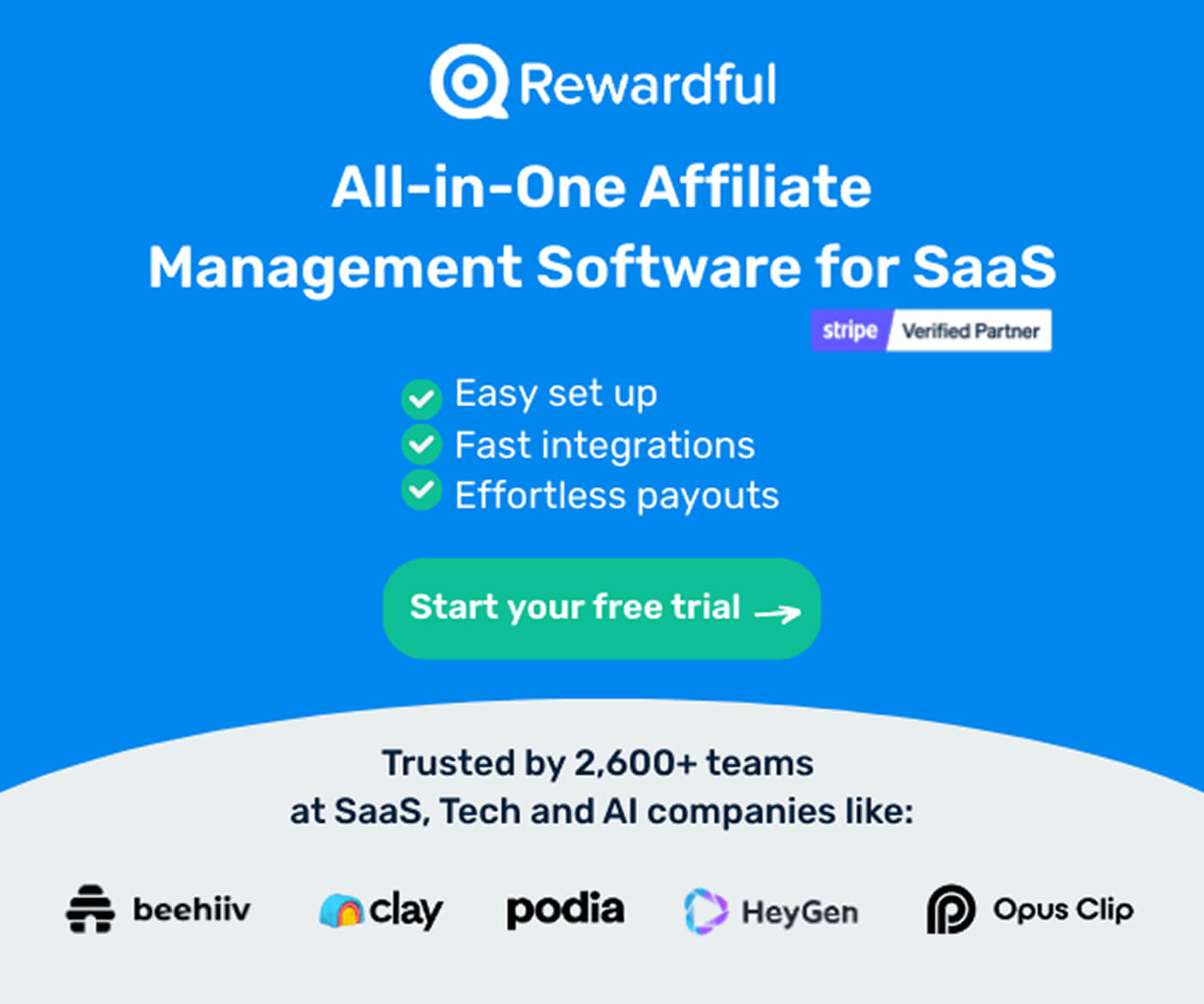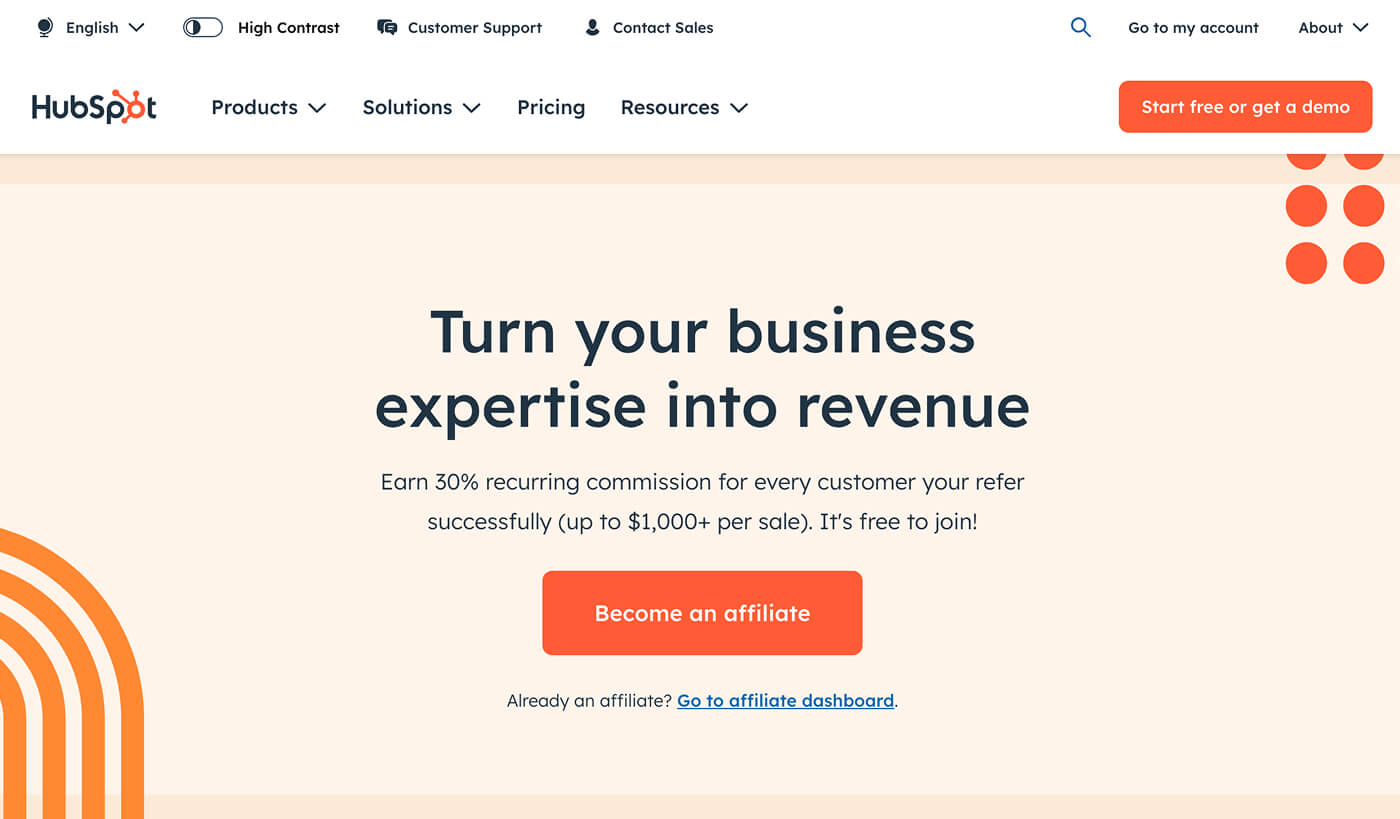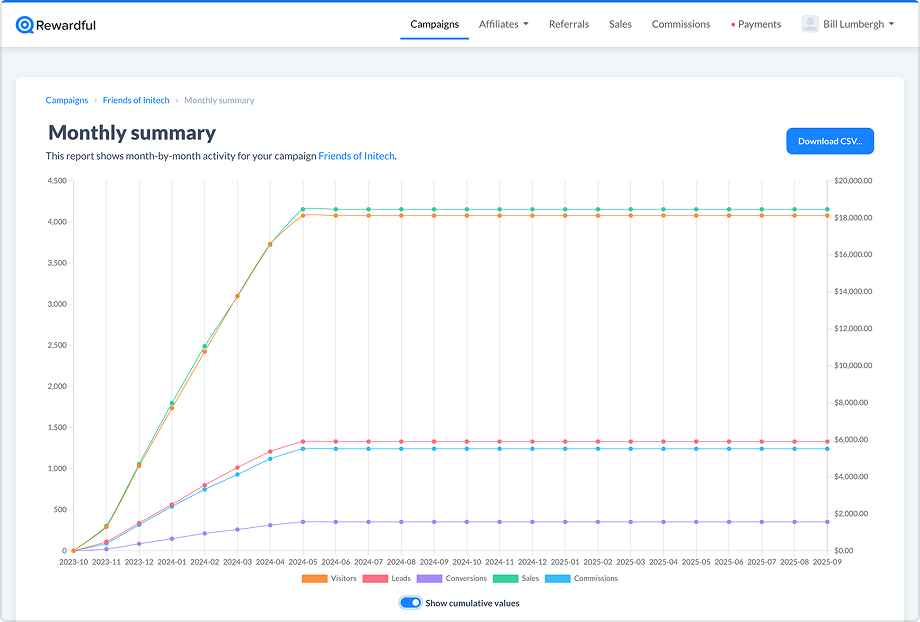Affiliate marketing assets are the foundation of any successful affiliate strategy. They equip your affiliates and partners with the tools they need to promote your brand effectively. From branded visuals to conversion-focused landing pages, well-crafted assets help high-performing affiliates represent your products with authenticity and impact.
While many programs still rely on basic banners and generic copy, today’s top affiliates expect data-driven, audience-specific materials that drive real results. In this 2025 affiliate marketing guide, you’ll learn how to create high-converting affiliate marketing assets that strengthen partner relationships and elevate your campaign performance.
11 Ideas for High-Impact Affiliate Promotion Assets
Below is a list to draw inspiration from, and if you make it all the way to the end, we’ll throw in some bonus ideas.
Bear in mind that you don't need to create all these assets; it's crucial for you to pick the ones that work for you – based on the steps we outlined earlier.
Remember, the best affiliate materials are those that resonate with your brand and your affiliates' audiences.
A. Visual and Branded Content
1. High-Impact Visuals and Banners
Visual assets are often the first point of contact between an affiliate’s audience and your product.
To make them stand out, offer a variety of sizes and styles, ensuring that banners can be personalized for different affiliates, platforms, or campaigns.
Keep brand alignment front and center and ensure all images resonate with your brand's aesthetics and values. And don't be afraid to ask for feedback from affiliates.
See this banner examples from Rewardful’s affiliate program.

2. Branded Instagram Filters and Lenses
Create custom Instagram filters or Snapchat lenses that affiliates can use in their stories. These can range from simple brand logo overlays to more complex filters that transform the user's environment related to your product.
3. Virtual Backgrounds for Video Calls
Offering branded virtual backgrounds for Zoom or other video conferencing tools can be a subtle way to promote brand visibility.
4. Custom Merchandise
Create a line of branded merchandise that affiliates can use as giveaways or rewards for their audience. This could range from apparel to unique gadgets, all stamped with your brand's logo or slogan.
5. Augmented Reality Experiences
If feasible, create AR filters or apps that affiliates can share, allowing their audience to virtually try your products.
B. Social and Interactive Engagement
6. Social Media Kits
Social media content must be both engaging and shareable. Simple social media posts don't add value and won’t boost conversions. If anything, posts that aren't engaged with will damage your further reach. One great asset to create is infographics, but there’s more you can do.
You can craft memes (be sure to do a vibe check with the funniest person in the company) or GIFs if that resonates with your target audience.
You could create content for TikTok, short clips, or slideshows to share on Instagram. Get creative, and don't just stick to templates.
See how the affiliates from OpusClip creatively promote the brand by creating engaging TikTok videos, such as this one.

7. Interactive Quizzes and Polls
Design quizzes that affiliates can use to engage their audience. Tailor these quizzes to help users decide which of your products suits them best, with the results pointing to affiliate links.
8. Gamified Challenges
Craft challenges or small online games that embody the spirit of your brand and incentivize participation with discounts or special offers through affiliate links.
C. Storytelling and Educational Media
9. Engaging Video Content
Video content can dramatically boost conversion rates. To ensure effectiveness, invest in high-quality production that reflects the standard of your brand. You can produce all kinds of video content.
Tutorials and FAQs, product demonstrations, and customer success stories–mix things up to provide both instructional value and evoke an emotional response.
See how this affiliate created a review video of beehiiv to inspire you.

10. Case Studies and Testimonials
Social proof is a powerful persuader. When creating case studies and gathering testimonials, focus on transformational stories that show a before-and-after journey of a customer.
Include a range of case studies that cover various use cases and demographics, and make these case studies easily accessible and shareable with a library or database that affiliates can draw from.
D. Downloadable and Shareable Resources
11. E-books or Interactive PDFs
Offer informative e-books or interactive PDF guides with embedded affiliate links. They can be guides related to your product's industry, offering both insights for the reader, and a pathway to purchase.
How HubSpot’s 400+ Affiliate Assets Drive Consistency and Conversions - A Case Study

HubSpot’s affiliate program doesn’t just win on commission structure (though 30% recurring for 12 months is nothing to scoff at). What really sets it apart is the scale and polish of its affiliate asset library.
Affiliates get access to over 400 ready-to-use resources, including branded banners, demo videos, blog copy, social posts, and campaign templates—each designed and approved by HubSpot’s internal teams. These assets are updated regularly and tailored for different products, channels, and audiences.
You'll never catch HubSpot being off-brand, even when mentioned by its affiliates, and that is powerful. Even when thousands of affiliates are promoting HubSpot across wildly different platforms (such as YouTube, LinkedIn, niche blogs) the messaging still feels on point. The tone is right, the info is correct, and the visuals align. And that consistency builds audience trust, which translates into clicks and purchases.
This level of support also lowers the barrier to entry. Affiliates don’t have to spend hours designing creatives or writing intros from scratch. They plug in what’s provided, tailor it to their voice, and get going. HubSpot does the heavy lifting on brand consistency so affiliates can focus on what they do best: converting.
This is a great reminder that the volume, quality, and relevance of your affiliate assets don’t just affect performance, but they also protect your brand.
How to Create and Monitor High-Converting Affiliate Assets
Step 1: Identify the Right Assets for Your Affiliates
Not all affiliate marketing assets are created equal, and what works for one affiliate or product might not work for another.
To ensure you're investing time, money, and effort in affiliate marketing resources that will yield the best results, take a step back and reflect on what you really need.
Here’s how to do your research:
- Affiliate feedback: engage with your affiliates regularly to understand the types of assets that have worked for them in the past and what they believe will work in the future. This can be done through surveys, one-on-one interviews, or feedback forms.
- Market analysis: keep a close eye on marketing trends within your industry. Which types of content are gaining traction? What are competitors offering their affiliates, and how’s that performing? (Just because a competitor is going heavy on the memes and GIFs doesn't mean it's a good idea. Look at the stats before going all in.)
- Performance metrics: leverage data analytics in your affiliate tracking platform to see which of your own assets are performing best. Track metrics like click-through rates, conversion rates, and overall engagement to determine what to produce more of. Even better, ask your affiliates for their data to see what type of content has been performing well with their specific target audiences.
- Trial and feedback: don’t be afraid to experiment with different types of assets, but always circle back to measure performance. Create a feedback loop where you can rapidly iterate based on what the data tells you.
- Affiliate segmentation: recognize that affiliates come from diverse backgrounds and have different strengths. Segment your affiliates and tailor assets according to their unique profiles and audience demographics.
Step 2: Creative Collaboration with Affiliates for Better Assets
Struggling to come up with one-of-a-kind creative assets? Time to team up.
High-value affiliates often know their audience best, making them ideal partners in creating marketing assets they'd love to share.
Here’s how to harness their insights and preferences in a collaborative creation process:
- Initial consultation: begin with a conversation. What does the affiliate feel is missing in the current asset library? What has worked well for them in the past? What have they always wanted to try, but don't have the capacity to create?
- Brainstorming sessions: organize creative brainstorming sessions with your affiliates. This could be a structured workshop or an open-ended discussion. The goal is to generate ideas that combine the strengths of both the affiliate’s personal brand and your product’s unique selling points.
- Design workshops: involve affiliates in the design process. Use tools like Canva or Figma, where you can collaborate on designs in real-time, or level up with a designer. Affiliates can provide immediate feedback, ensuring the final assets are something they’re excited to use.
- Iterative process: share drafts and prototypes with affiliates, allowing them to suggest improvements or refinements. This iterative process ensures the final assets are polished and effective.
- Exclusive co-creation: for your top-tier affiliates, consider co-creating exclusive assets that they can offer as unique content to their audience. This could be special edition graphics, customized videos, or even unique product bundles.
- Legal and brand compliance: ensure that all co-created assets comply with legal standards and brand guidelines. Having clear parameters from the start can streamline the collaborative process and protect both parties.
Step 3: Asset Performance Tracking and Optimization
Creating assets is only part of the equation (and the fun!). Making sure they actually work takes tracking and optimization. Here's how to make sure your asset are more than just a pretty picture.
Sidenote: You're not trying to create perfect assets right away, and you won't be able to. Your goal should be to build a system that gets better through testing and learning from real results.
What to Measure
- Click-through rates by asset type: Which formats work best—banners, videos, social posts? Focus your time on what's getting clicks.
- Conversion rates by affiliate type: Beauty influencers might love video tutorials, while tech bloggers prefer infographics. Track what works for whom.
- Asset shelf life: How long do your assets stay effective? Seasonal stuff might need updates every few months, while educational content can work for years.
- Download vs. usage rates: Are affiliates downloading assets but not using them? High downloads with low usage usually mean the asset looks good but isn't practical.
Refine Your Affiliate Marketing Asset
- Ask your affiliates directly. Set up quarterly calls with your top performers. What's working? What's missing? They'll tell you exactly what they need.
- A/B test everything. Create multiple versions of your best assets. Test different headlines, colors, call-to-action buttons. Small changes can make big differences.
- Learn from patterns. Compare performance across seasons and affiliate types to spot trends you can use for future planning.
Improve the Effectiveness of Your Affiliate Assets
- Double down on what works. Spend your time improving assets that are already showing promise, not trying to fix fundamentally broken ones.
- Customize for top performers. Your highest-revenue affiliates deserve personalized assets. It's worth the extra effort.
- Rotate regularly. Even great assets get stale. Set up systems to cycle through different versions so audiences don't get bored.
- Cross-pollinate insights. If a message works great in affiliate marketing, test it in your email campaigns or social media too.
For more on tracking affiliate performance and understanding which metrics actually matter, check out our guide to affiliate marketing metrics.
Future Trends in Affiliate Marketing Assets
Three trends are changing how professionals in the industry are creating and using affiliate assets. Here's what you should look into:
1. AI for Creation and Asset Management
It won't be a surprise to anyone: AI tools can now whip up personalized banners and social posts in minutes instead of weeks, and they're looking better every day.
We're not talking about basic templates a la Canva. AI tools will soon be able to analyze your affiliate's audience, digest the data, and create custom graphics that are a perfect match for your personas.
And it's not just what's going out on timelines. There's a lot happening behind the scenes, too. AI can also manage your affiliate marketing asset library. It'll automatically suggest your best-performing banner to similar affiliates and flag the duds that need fixing. No more guessing which creative to send to which partner, giving you a much faster and more streamlined system.
2. Interactive and Shoppable Content Assets
Static images and basic banners are losing their attractiveness in affiliate marketing promotion. If you want to attract attention, you need something dynamic. The future lies in interactive assets that allow potential customers to engage directly with products before clicking through to purchase.
This type of content is more diverse than you might think. It could be shoppable videos where viewers can click on products within the content, or interactive product configurators embedded in affiliate websites, and augmented reality try-on experiences that affiliates can seamlessly integrate into their content. Let your imagination run free, basically.
And these assets don't just look cooler, but they convert better as well. Interactive content generates more conversions than passive content (if you follow all other best practices, it's not a straight-up guarantee!), and affiliates are increasingly demanding these high-engagement tools to stand out in saturated markets.
3. Real-Time Personalization of Affiliate Marketing Assets
One-size-fits-all affiliate assets will soon be a thing of the past. Advanced platforms now are working on enabling real-time personalization, where the same asset automatically adapts based on the viewer's location, browsing history, time of day, or even current weather.
That means an affiliate promoting a SaaS tool could show different messaging to morning visitors (productivity-focused) versus evening browsers (work-life balance themes), all using the same base asset that dynamically adjusts content.
Additionally, content marketing becomes more unique to viewers, without adding a lot more workload to the affiliate's plate. All they need is to learn to leverage these new tools.
This hot new trend extends to performance optimization as well. Assets that automatically A/B test elements like headlines, colors, or call-to-action buttons, learning and improving with every interaction.
Affiliate Marketing Asset Distribution Strategies
Distributing marketing assets effectively is as crucial as their creation.
For top-tier partners, streamline this process through:
- Centralized affiliate marketing asset portals: offer a one-stop shop portal for easy asset access, ensuring it's user-friendly and regularly updated.
- Personal touch: for elite affiliates, personally send tailored asset collections, reinforcing their importance to your brand.
- Cloud access: use Cloud-based platforms for instant, anytime access to the latest materials.
- Feedback integration: keep communication channels open for feedback to improve future asset development.
Building Long-Term Affiliate Marketing Asset Strategy
Creating affiliate marketing assets is just the beginning—building a long-term strategy is what drives real, sustainable growth. At Rewardful, we help you connect the dots by providing the tools you need to create, manage, and scale your affiliate program with confidence.
From custom commission structures to branded affiliate portals, we give SaaS businesses everything they need to turn affiliates into loyal brand advocates.
Start your journey with Rewardful today and unlock the full potential of affiliate marketing—backed by software that grows with you.














